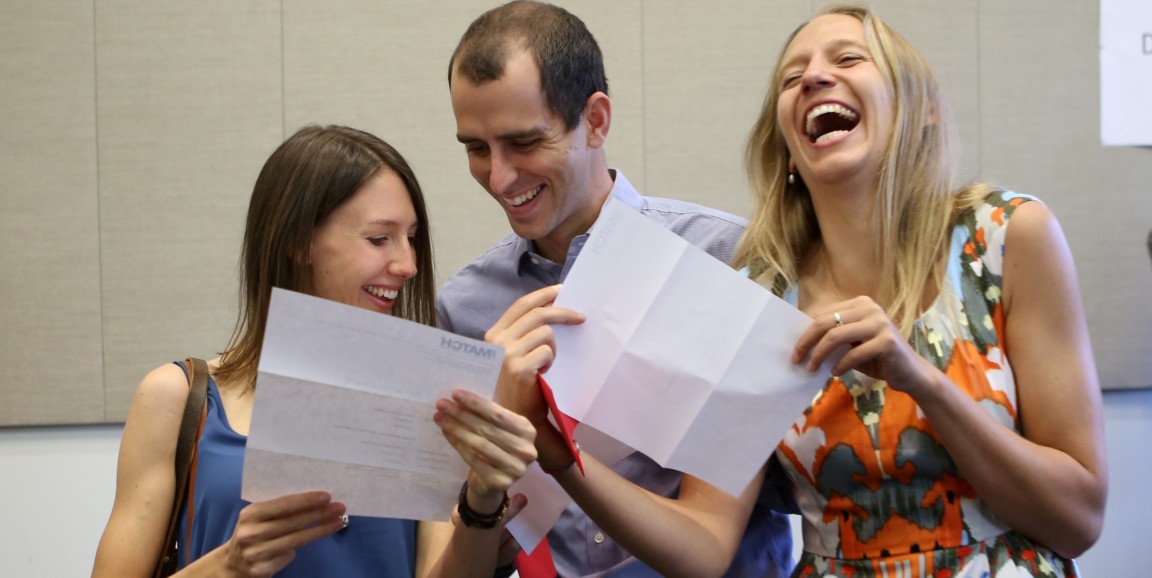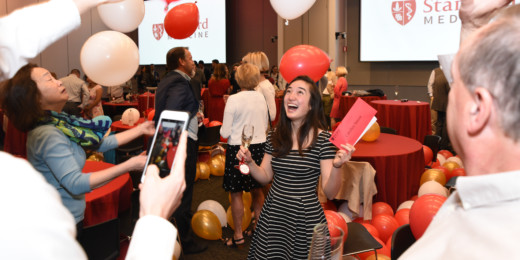Match Day is arguably the most important ceremony in medical school, perhaps even more meaningful than the white coat or the graduation ceremony. This year, during the ides of March, thousands of MD candidates throughout the country tore open an envelope to discover the medical specialty and the locations they'll be training in for the next three to seven years of their lives. In a sense, it's like putting on the Sorting Hat at Hogwarts to find out which house you'll wind up in; your future affiliation and your peers are announced all at once. To say it affects the course of your life would be a profound understatement.
Most of my peers in the entering class of 2015 took off an additional year to conduct research or pursue other scholarly endeavors. However, 25 students from our class of nearly ninety matched into a residency program this year. I couldn't help but feel an intense swelling of pride by the fact that my classmates were finally moving on to the next stage of their careers, especially since I've witnessed the sacrifices and growth that they have undergone to reach this point.
We have all grown so much in the last four years since we stumbled awkwardly into orientation week, some of us still rooted in our competitive pre-med mentalities (confession: myself included). We tried to get a sense of where we were in our intimately small class by getting to know each other, figuring out which specialties others were interested in, and others' goals in medicine. And in no small part due to the collaborative nature of Stanford, our class grew closer.
(During our medical school orientation, there was one odd debacle in which a non-student friended entering Stanford medical students on social media. He Photoshopped his face onto pictures from our Facebook group to fool to his Facebook friends into thinking he was attending Stanford. As we got to know each other in our class in-person early in the year, we found out what was happening, and we booted him out of our group.)
My pre-clinical years were marked by long study sessions trying to understand the complexities of the human body and stumbling in front of actors posing as patients as we tried to learn how to sound like a doctor without actually feeling like one. But I also fondly remember the late-night bubble tea study sessions; the trampoline gym birthday party; and the long conversation about our families, our lives before medical school, and our dreams. The support of my classmates made the challenges of medical school much more bearable.
Then at the beginning of the third year, we were scattered across the four Stanford-affiliated hospitals and various clinic sites across the Bay Area. During this time, I would see my classmates on rare occasions -- dining at local restaurants, shopping at the nearby Whole Foods or Trader Joe's, and walking through hospital hallways. But regardless of where we were, we understood the challenges that others were facing as we went through the third year of medical training together. There were even some months where I rotated with my classmates, and I got to see them take care of patients, present in front of their team, and even run trauma codes. I had the privilege of watching them grow as I also grew.
And my awe wasn't reserved solely for my Stanford peers. It was exciting to see high school and college friends go through the match in medical schools across the country, some in fields and programs that they had dreamt about for years, perhaps even over a decade. How many people who dream of being a doctor as a kid end up realizing their goal? I've seen my friends overcome setbacks, doubts, and disappointments throughout the years, and on March 15th, they had their day of triumph.
Their challenges won't end with the match of course, and in a couple of months, my former and current classmates will become doctors and take care of their own patients. It's incredible to see how we are progressing as students, as professionals, and as human beings, and seeing them, I am excited for the future of medicine.
Stanford Medicine Unplugged is a forum for students to chronicle their experiences in medical school. The student-penned entries appear on Scope once a week during the academic year; the entire blog series can be found in the Stanford Medicine Unplugged category.
Yoo Jung Kim is a fourth-year Stanford medical student and the co-author of What Every Science Student Should Know, a guide for aspiring college STEM students. She also writes for Doximity and U.S. News and World Report.
Photo from 2017 Match Day by John Green






